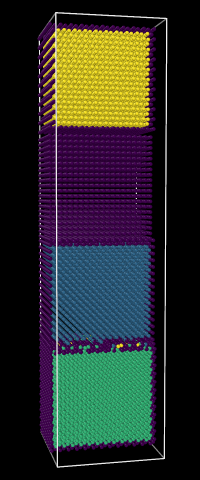CLASSIFICATION: UNCLASSIFIED
Thanks for the heads up, Chris. It has been quite some time since I've thought about the Ackland code, and unfortunately I don't have my old postdoc email address or archives from when that change was made. But yes, I wrote that patch. The algorithm itself is described in table II of Ackland and Jones, doi: 10.1103/PhysRevB.73.054104 . The original lammps-users thread discussing my change is available at: http://lammps.sandia.gov/threads/msg55921.html
I believe the original LAMMPS implementation was missing part of step (v) from table II in the paper, and other small discrepancies. I have not examined the Ovito implementation and therefore cannot comment on it. I do enjoy using Ovito (Hi, Alex S.! Nice work).
If there is a question of correctness, I would recommend referencing the Ackland/Jones paper and determining where the implementation, in any program, differs from algorithm described in the text. The n0 < 11 test, for example, is explicitly in the paper. I believe my patch improved the correctness of the LAMMPS implementation, and was trying to help based on a problem I encountered when analyzing my simulation. But, it's possible that someone else's analysis may encounter a difficulty in another part of the implementation.
cheers,
Brian Barnes
US Army Research Laboratory
